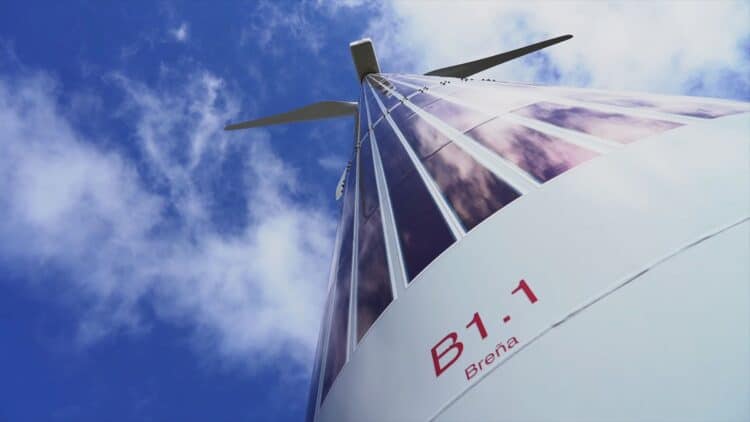Imagine looking at the side of a building and, instead of cold glass and concrete, seeing a surface that produces clean energy. And we’re not talking about the traditional flat, straight panels that occupy rooftops or vast fields in the middle of nowhere. This is a different story: panels that mold to the curves and textures of a building, as if they were part of it from day one.
How flexible solar films are rewriting the rules of energy
For decades, solar energy has followed a nearly unbreakable pattern: rigid, rectangular modules supported by fixed structures. And, sure, they work very well, but they also leave out a whole world of surfaces. Curved roofs, sloping facades, cylindrical walls… all of these have always been out of the question. Until this is changing now, some engineers even say there’s a huge market where traditional photovoltaics simply don’t work.
That’s because the innovation comes from a technology called flexible organic photovoltaics, which are ultra-thin, malleable, and incredibly lightweight solar cells. Unlike traditional silicon, these cells can be bent, shaped, and glued virtually anywhere. And here comes the revelation: we’re talking about HeliaSol, a self-adhesive solar film capable of transforming entire buildings into power generators, without the need for screws, drilling, or heavy structures. In practice, what changes is:
- Ultra-lightweight: less than 2 kg per module.
- Minimum thickness: less than 2 mm (excluding the junction box).
- Simple installation: glue, roll, and connect.
- Low carbon footprint: less than 10 g CO₂/kWh (much lower than silicon).
All of this means that previously unusable locations for solar energy, such as fragile roofs, domes, or glass facades, are now on the energy generation map.
Plastic, powerful, and programmable: the OPV tech turning anything into a solar panel
Now, while this technology may seem simple on the surface, it’s the result of decades of research in OPV (Organic Photovoltaics). Unlike silicon, which is rigid and relies on crystals, OPV is made of layers of organic semiconductor materials, applied to a plastic film. These materials have an incredible advantage: they can be chemically manipulated to optimize light absorption, charge conduction, and durability. It’s like having a “custom-made panel” for different environments (this panel is as surprising as this one made of “impossible” material that makes panels work in strange ways).
The technology isn’t standing still, as laboratories have already achieved nearly 20% efficiency in prototypes, approaching silicon rates. This opens up a range of applications beyond buildings: buses, bridges, wind turbines, and even fabrics capable of generating energy in the military. Some application examples:
- Curved facades of commercial buildings.
- Cylindrical structures such as silos and tanks.
- Glass roofs that partially maintain transparency.
- Quick installations in areas with weight or drilling restrictions.
Beyond rooftops: why flexible solar could unlock the next energy revolution
Of course, challenges remain, the first of which is scaling. Producing a small module with high efficiency is one thing; consistently manufacturing meters and meters of film is another. But recent advances, such as faster and more precise blade coating techniques, promise to reduce costs by more than 10 times, making OPV competitive with silicon, even on a budget.
In any case, the world needs to install renewable energy four times faster to meet its decarbonization goals by 2050, according to the IEA. And this won’t be possible with traditional solar fields alone: we’ll need to take advantage of every available surface area. And that’s where technologies like HeliaSol shine. After all, by utilizing areas currently blank on the energy map, it multiplies generation potential without competing for space with agriculture or housing. Just as this world’s first eco-solar cell is doing.
Disclaimer: Our coverage of events affecting companies is purely informative and descriptive. Under no circumstances does it seek to promote an opinion or create a trend, nor can it be taken as investment advice or a recommendation of any kind.


